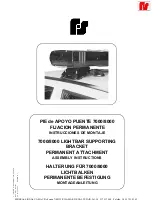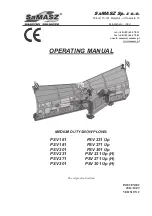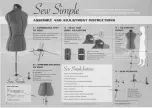
S4000C
18
NOTE:
The address can be adjusted from 1 - 247. Channel 1 and Channel 2 addresses may
be the same.
4.5 Gas Check Mode
The sensor response can be checked without activating external alarms by placing the Model
S4000C in Gas Check Mode. In this Mode, the alarm relays are inhibited and the analog output
is fixed at 1.5mA.
4.5.1 Procedure for Checking the Calibration
Place the magnet over the GM Logo on the cover of the Model S4000C. Remove the magnet
when a flashing pair of bars, “
- -
” (Figure 12), appears on the display (about ten seconds).
Apply the test gas to the sensor; the value of the gas concentration will be indicated by the
flashing display, and should stabilize in one to two minutes.
Figure 12: Calibration Check
When the reading has stabilized and the test is complete, remove the gas and the unit will
return to normal operation when the concentration drops below 5% full-scale.
If, after the reading has stabilized, the sensor is to be calibrated, simply apply the magnet to the
GM Logo on the housing cover, and the unit will enter Calibration Mode.
Gas Check Mode can be aborted if gas has not been applied to the sensor. Simply reapply the
magnet to the GM Logo on the cover and the unit will return to normal operation.
NOTE:
The test gas concentration must be at least 10% full-scale before the unit will complete
the gas check sequence. If the Model S4000C is placed in the Gas Check Mode and
no gas is applied for six minutes, the unit will revert to a Fault condition. Re-applying
the magnet over the GM Logo will return the unit to normal operation.
4.6 Calibration
General Monitors recommends that the Model S4000C Intelligent Sensor be calibrated one
hour after start-up, and that the calibration be checked at least every ninety (90) days to ensure
system integrity. Frequent calibration checks ensure the integrity of the life protecting
equipment.
The above statement is not intended to discourage the customer from checking calibration
more frequently. Frequent calibration checks are recommended for environments that have
problems, such as mud collecting on the sensor head, sensors accidentally being painted over,
etc.
















































